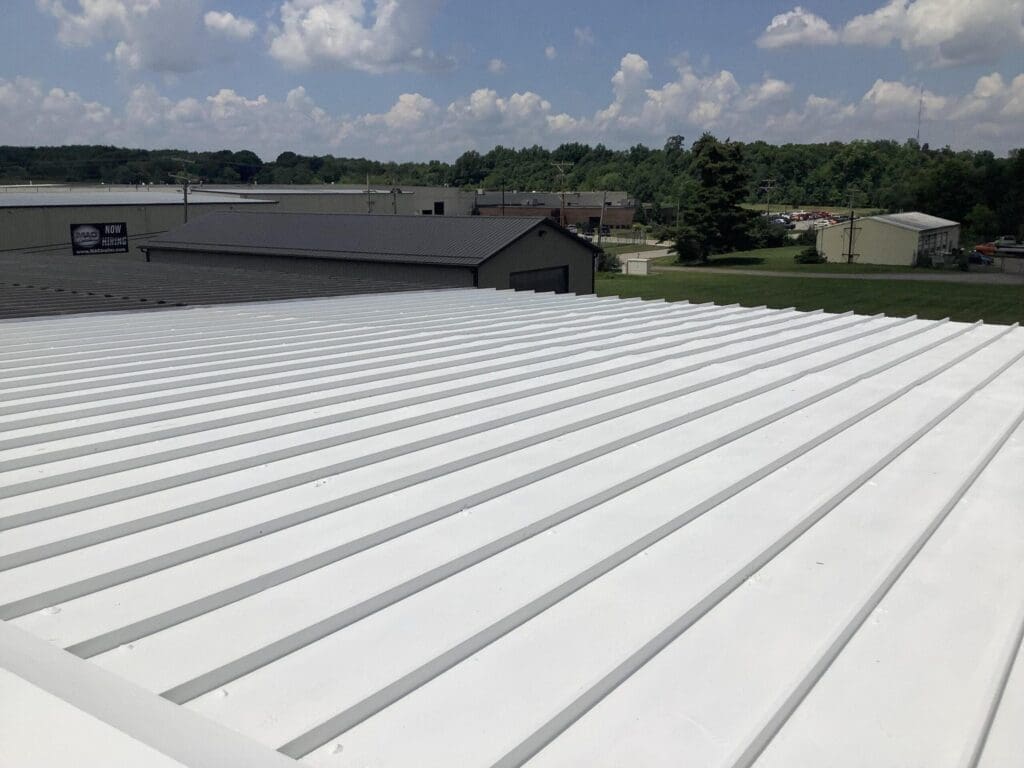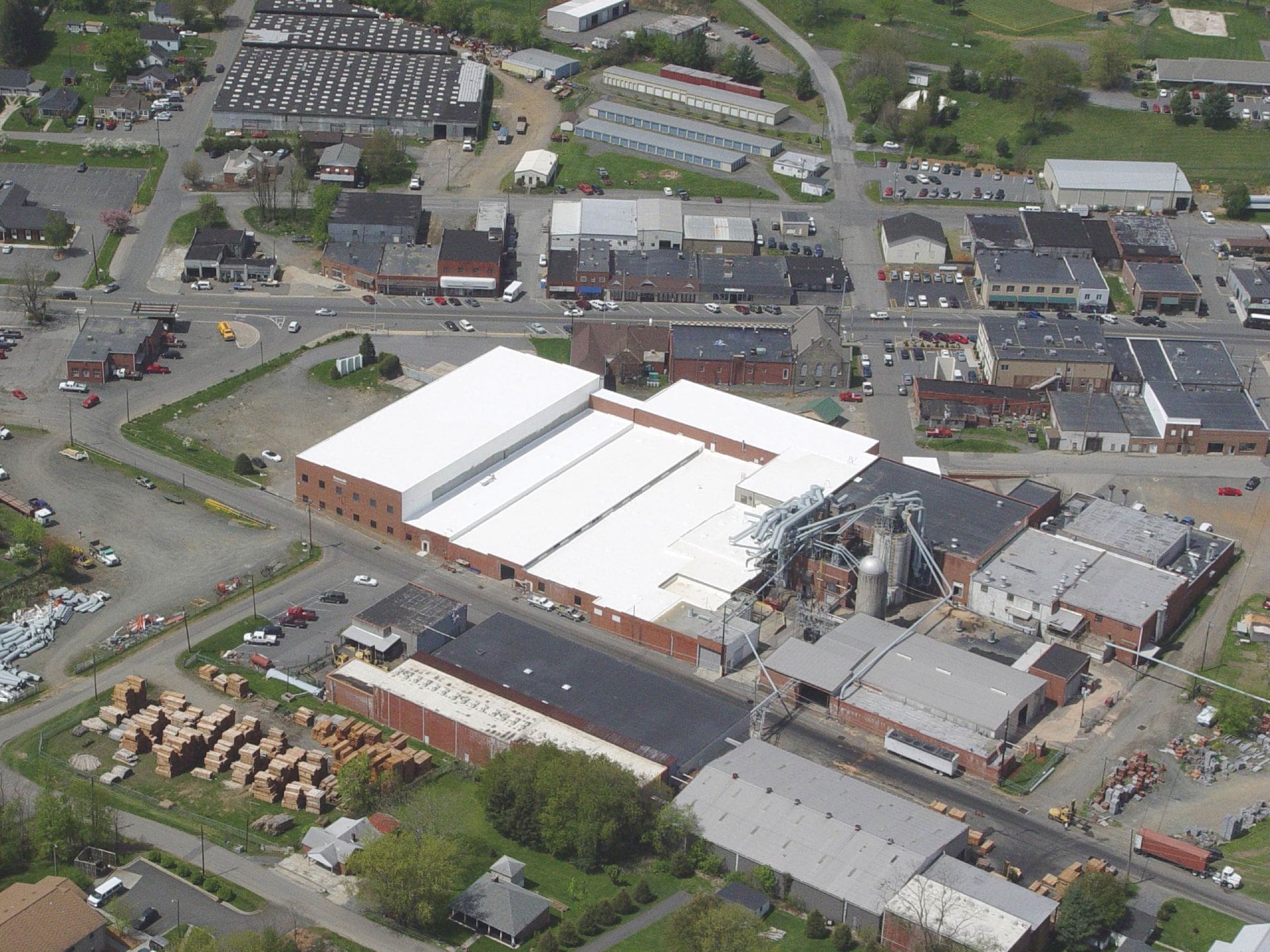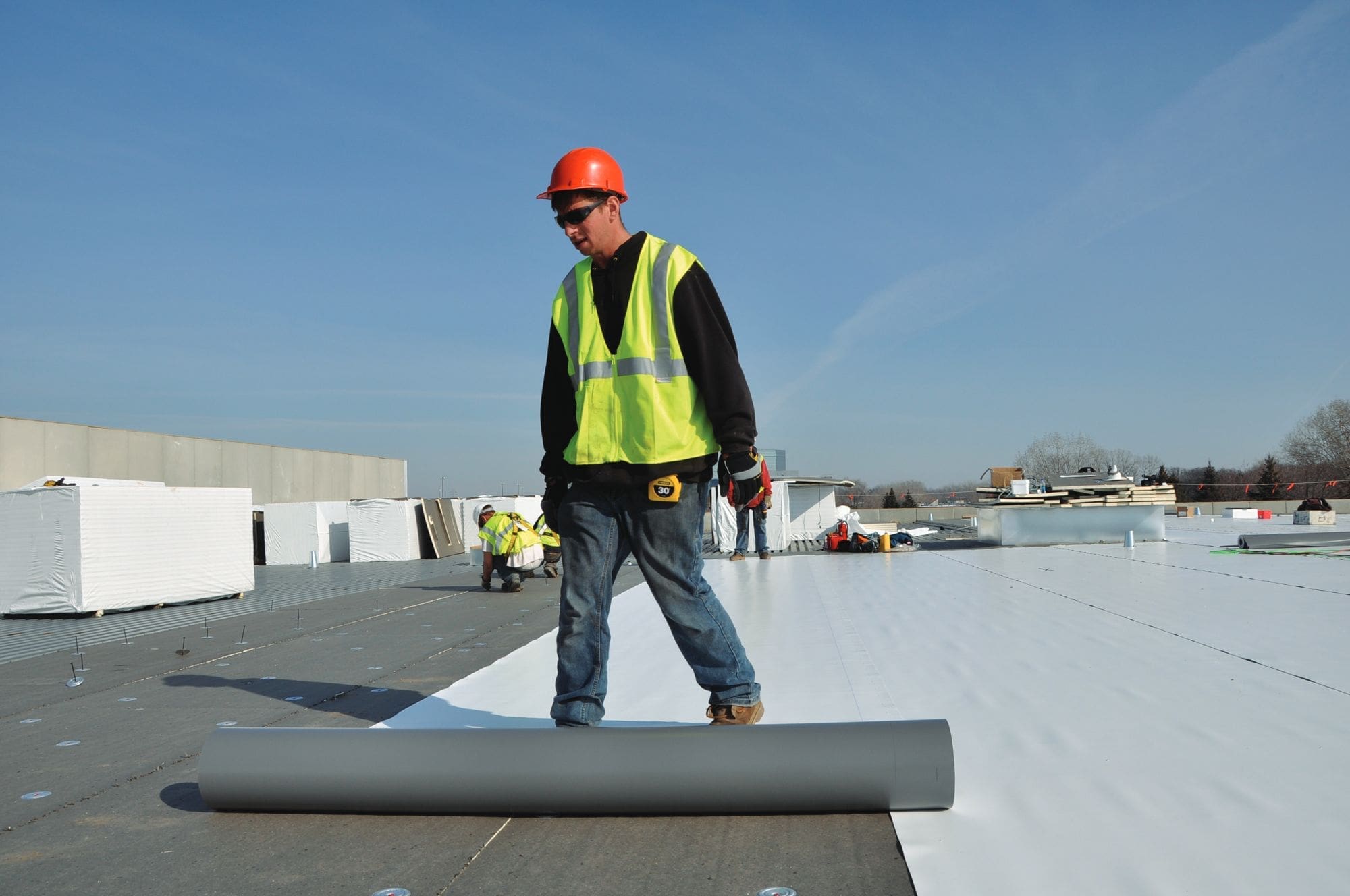Commercial roofing goes beyond the installation of roofs on buildings, it is about choosing the best materials that will provide long-lasting protection for your property. When it comes to commercial roofing, there are a variety of materials available in the market. However, not all materials are suitable for every commercial building.
Here’s a detailed look at some of the top roofing materials for commercial applications, helping you make an informed decision for your next roofing project;

Metal Roofing.
Metal roofs are a hallmark of durability and sustainability. Common materials used include aluminum, steel, and sometimes copper or zinc. Metal roofing is known for its longevity (up to 50 years or more), ability to withstand high winds, and its recyclability. It’s an excellent choice for those looking to enhance their building’s aesthetic appeal while ensuring robust protection against the elements. Additionally, metal roofs can be coated to improve their reflective properties and resistance to rust.
EPDM Roofing (Ethylene Propylene Diene Monomer)
One of the most cost-effective and durable roofing options available is EPDM, commonly known as rubber roofing. Its resilience against extreme temperatures, UV rays, and harsh weather conditions makes it a preferred choice for many business owners. EPDM roofs are known for their ease of installation and minimal maintenance requirements. They can last up to 30 years with proper care, offering a great return on investment.
TPO Roofing (Thermoplastic Polyolefin).
TPO roofing is another popular choice among commercial property owners. It’s prized for its reflective properties, which help in reducing cooling costs during the warmer months. This roofing type is welded with heat to create airtight seals that improve durability and leak resistance. TPO is also environmentally friendly, being 100% recyclable, and it can last between 20 to 30 years, depending on environmental conditions and installation quality.
PVC Roofing (Polyvinyl Chloride).
For commercial roofs that encounter oils from restaurants or exposure to chemicals, PVC roofing is an ideal option. This material can resist chemical erosion and is also fire-resistant, reducing the risk of spreading flames in case of a fire. Like TPO, PVC roofs are also white or light-colored, enhancing their ability to reflect sunlight and conserve energy. PVC’s lifespan also aligns closely with TPO, providing lasting service if installed correctly.
Built-Up Roofing (BUR).
Built-up roofing, or BUR, is a traditional hot-tar-and-gravel roof that consists of multiple layers which enhance its durability and waterproofing characteristics. This type of roofing is valued for its proven track record in the commercial roofing industry and its affordability. BUR is particularly effective in high-traffic areas or where the roof may be subjected to mechanical abuse, providing a thicker barrier compared to single-layer systems.
Modified Bitumen Roofing.
Modified bitumen is an evolution of asphalt roofing. It is applied in rolls that are usually heat-adhered to the roofing substrate, creating a resilient, waterproof surface. This material is favored for its enhanced flexibility and tensile strength, especially in colder temperatures. Modified bitumen roofs are easy to maintain and repair, making them a cost-effective solution for many businesses.
How to make the decision.
When selecting a roofing material, consider the specific needs of your building, including climate, building codes, and your long-term maintenance capacity. Budget, of course, also plays a critical role in this decision. It’s important to work with a trusted commercial roofing contractor in Eau Claire, WI.
At Schwartz Coatings, we pride ourselves on helping you navigate these choices, ensuring that you receive a roofing solution that meets your expectations. Whether you are installing a new roof or planning a replacement, we are here to guide you every step of the way, guaranteeing a roof that is built to last.




